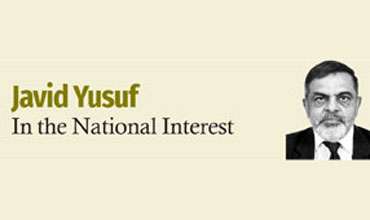System change: Hallucination vs. substantiality
By Dr. Y. Ratnayake
A popular slogan chanted currently like an intonation in many political quarters is related to the pressing need for a system change since the existing system, according to the protagonists, has repeatedly failed to bring expected benefits to the country irrespective of government changes. Many believe that the way forward for emancipating the people from the fetters of social injustice and economic hardship is laid through the radical changes in the entire system, perhaps without understanding the implications and multifaceted paradigms associated with what the system change means.
Paradigms of a system
Lexicons describe a system as a regularly interacting and interdependent group of items forming a unified whole that can be used as the technical framework for conceptualizing the general underpinnings of the term “system”. Stated in different words, a system can be explained as a set of interdependent elements that make itself a coherent whole. The concept of a system is, in a way, a boundaryless phenomenon since the concept is expandable, applicable virtually to any given situation, and capable of embracing any object in the multiverse, under its ever-pervading domain.
Systems can be categorized, in the context of the current requirement, under two criteria, such as manmade and nature-made systems, both of which are characterized by similar and diverse features. For instance, planetary systems, ecosystems, etc. can be considered good examples of natural systems that have existed since time immemorial without known objectives for their existence. In contrast, manmade systems, in the majority of cases, such as economic systems, caste systems, and production systems, are established with declared or tacit objectives so that the system is instrumentalized by its designer for achieving some specific objectives.
As stated earlier, a system consists of a collection of subsystems, and therefore its survival hinges upon the ability to maintain or the existence of a high degree of synchronism among the different subsystems or components that make up the total system. According to the standard concept of a system, three subsystems—input, process, and output—are essentially included in a system that coexists harmoniously and interdependently for operating as a single entity. Another interesting ephemeron related to the system concept is the classification of systems as closed and open systems which possess distinctive characteristics entrenched in each type. An open system, according to epistemology on the subject, maintains links with external independent systems apart from the relationship that exists among its internal subsystems. In contrast, closed systems are supposed to be capable of maintaining their independent existence without external backing. Accordingly, such systems produce their inputs within their demarcated boundaries and consume the resultant outcomes within the system. However, it is pertinent to note that the existence of closed systems in the atmosphere of social or man-made systems is an exceptional phenomenon since social systems are nourished by external linkages similar to the function performed by the umbilical cord that provides life continuation ability to a fetus.
Dimensions of System Change:
As stated above, any effort aimed at system change should consider the fact that the process of change ought to be initiated with the input component but not the other way around since the output is mostly a dependent variable of the input. To exemplify the process, it is obvious that if timber is the input, then the output is timber-related products like furniture or fire, depending on the diversionary potentials of the specific input used and the purpose of the utilization of timber. Obviously, a change in the input component of a system leads to cascading changes spanning over the other two components of the system, namely the process and the output. This is a sine qua non for the harmonious and sustainable existence of the system to accomplish its envisaged goals or objectives.
For example, the technology used in an industry that utilizes timber cannot be employed if the industry input is transformed from timber to steel plates. However, the above situation tends to differ in agriculture in which organic fertilizer used as input can be shifted to chemical fertilizer without introducing major deviations in the cultivation process and the resultant output components. Despite the possibility of experiencing some cost and product quality, implications resulting from the shift in the input remain more or less the same. What matters in this context is that the technical and production systems are irrevocably entwined in manmade systems that largely depend on human inputs, both blue- and white-collar labor, to keep the system afloat. Regulating or recasting the human outputs and labor to match the demand of the technical operations is saddled with innumerable complications and complexities arising from intrinsic human nature and the motivational drives of different individuals. When it comes to political, administrative, production, and government changes, no country has yet invented a foolproof mechanism for regulating human inputs to accomplish the desirable goals as anticipated by the protagonists of system change ideology.
Another paradoxical issue that remains unanswered is whether abstract changes in systems are economically and functionally doable as long as manmade systems, economic and administrative systems, for example, remain themselves merged with the external and uncontrollable parameters such as the global energy system and economic groupings, for want of sustainability in terms of guaranteed input supply and disbursement of outputs. The issue brought into the limelight is that the local economic system does not warrant any major change in the production system as long as such changes are not compatible with or receptive to the global and the local subsystems that provide support at the input and output stages of the particular system.
System Change Versus System Adjustment:
A system change in pragmatic terms can be categorized into different typologies based on the criteria of the rapidity of change and the shift of parameters within the system that are transformed as a result of the incident of change. It appears to be a common phenomenon that rapidity and paradigm shift are positively correlated in a system change, as demonstrated by major historical incidents such as the Bolshevik Revolution in Russia in 1917, the Chinese Revolution in 1948, and the French Revolution that began in 1789, all of which took place during the last two centuries in different locations of the globe. The outcomes of those revolutionary changes are diametrically different from gradual transformations since they replaced the political, economic, and administrative atmosphere that functioned hitherto in those countries, which were perceived as tools of suppression used by the elite group of rulers, with unprecedented alternative systems. In short, the rapid, devastating, and diametrical magnitude changes are brought into reality, in the overwhelming majority of historical incidents, with the use of violence that traversed through immense human sacrifices, bloodshed, and human sufferings in the process of giving birth to total system changes.
The Reality
The logical question that can be raised out of the aforesaid explanation is whether a system change or a paradigm shift dimension is possible through a nonviolent, gradual, and consensus mechanism that is handicapped by its design to generate or propel the momentum necessary for revolutionary transformations in any social system that has been known hitherto. Furthermore, no evidence can be traced in world history to invalidate the fact that evolutionary changes have never been able to produce changes that smash the boundary restrictions of cosmetic transformation. If one looks around, an example can be found in dime a dozen, as demonstrated by recent political changes that took place in Sri Lanka and the USA, which can more justifiably be classified as system adjustments or modifications in the light of aftermaths observed in relation to the events. If one assumes that the recent changes in politics in the USA lead to cascading major changes or paradigm shifts in the role of the USA as a global power, such assumptions amount to figments of imagination.
For example, the hallmarks of US foreign policy, such as its belligerent approach to China, animosity towards Russia, and desire for world hegemony, the main structural foundation of US policy, will remain indeterminate as they are, guaranteeing that the global rivalry and the danger of nuclear catastrophe will perpetuate as usual irrespective of the Republican Party being succeeded in occupying the governance saddle of America.
In the same breath, the recent changes that took place in Sri Lanka in 2024 fall into the category of a cosmetic system modification, which is characterized by the same political saddle being jockeyed by a different rider with different riding gear, while the design configurations of the existing system remain virtually intact.
Even if it is assumed that a total change in social systems is possible, the complex human system, the people factor that operates the social system, is preordained to remain intact in the long run. System change is not a cakewalk but a phenomenon that surpasses the wildest imagination of wishful-thinking people.
MAN PROPOSES GOD DISPOSES.
(The writer is a former Senior Consultant at the Sri Lanka Institute of Development Administration.)
-
Still No Comments Posted.














Leave Comments